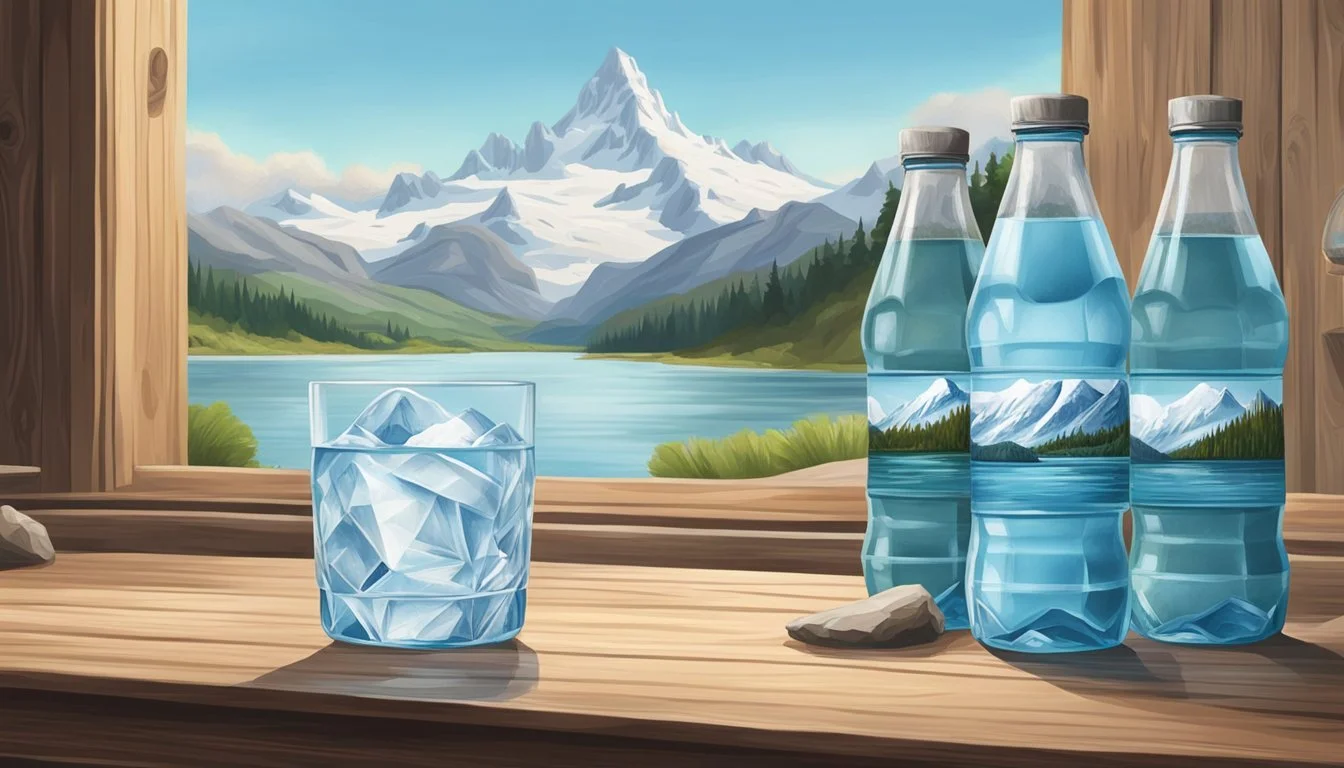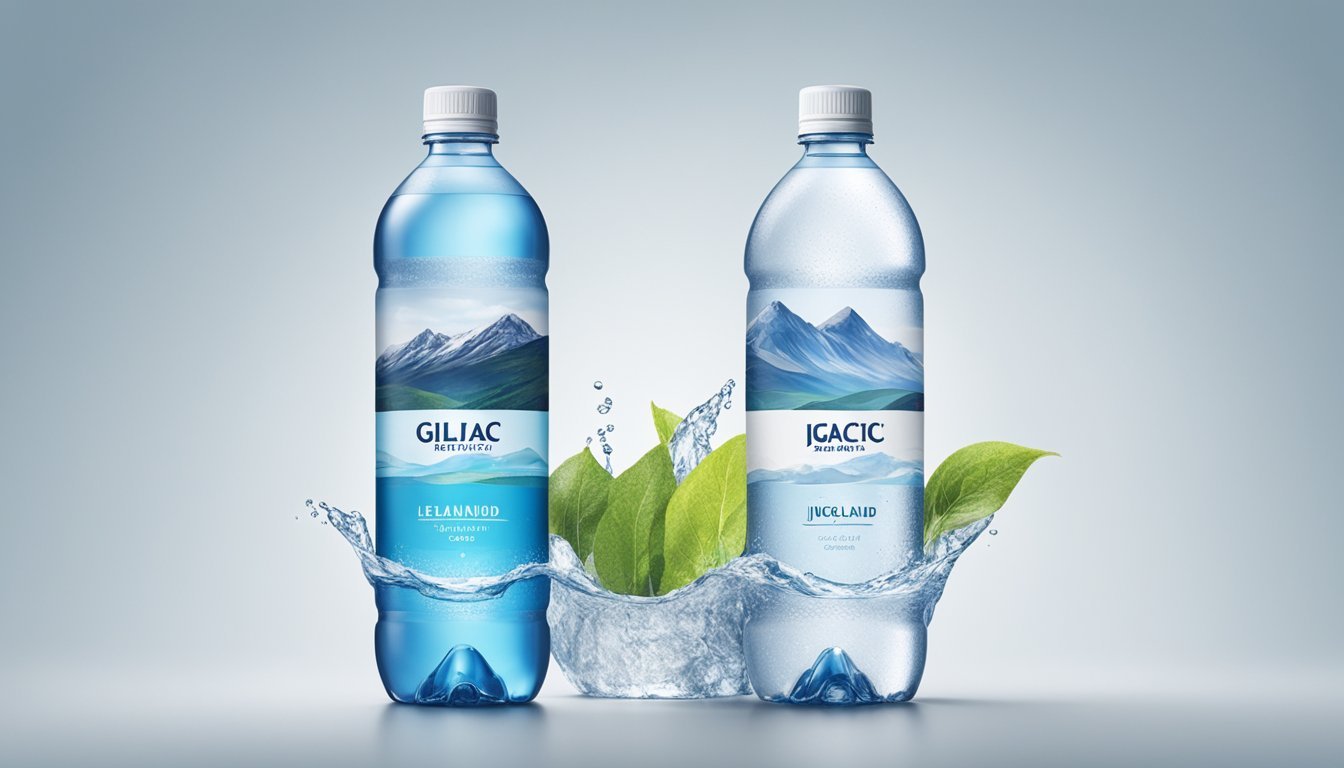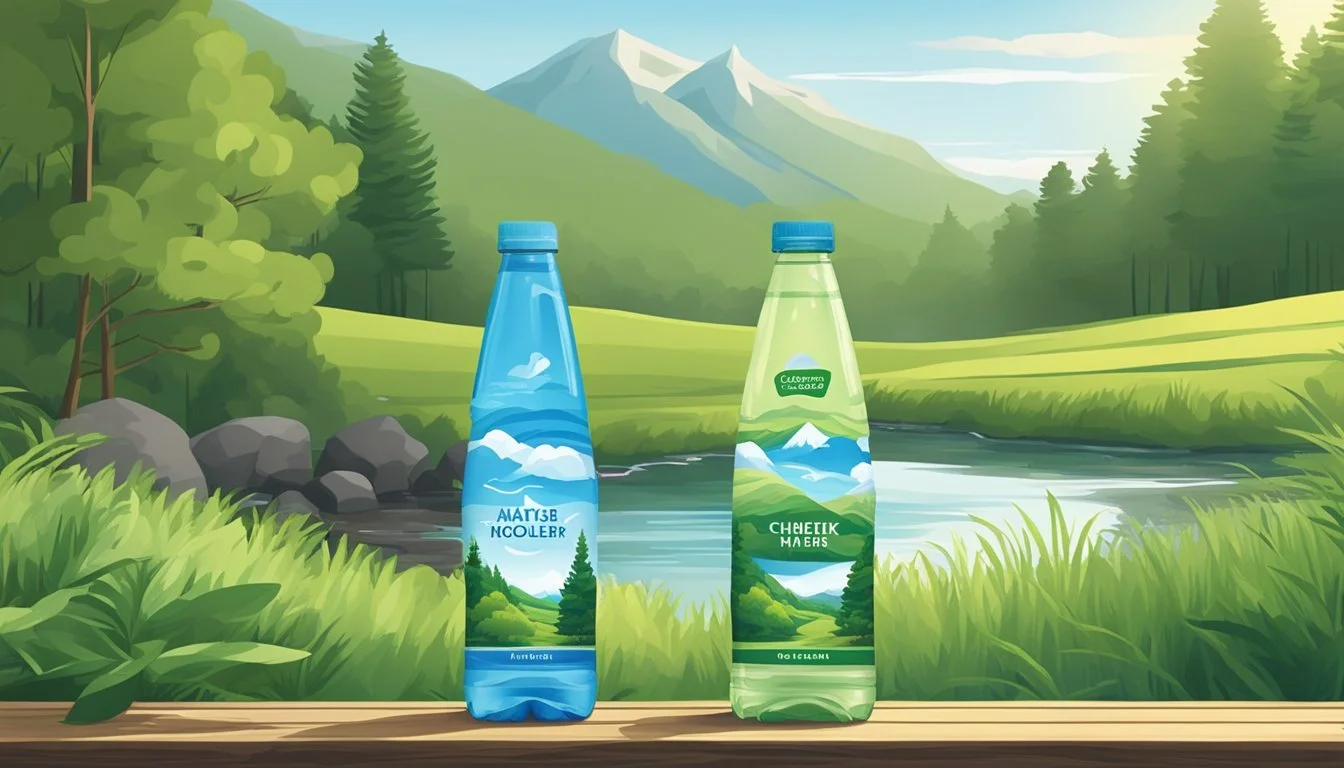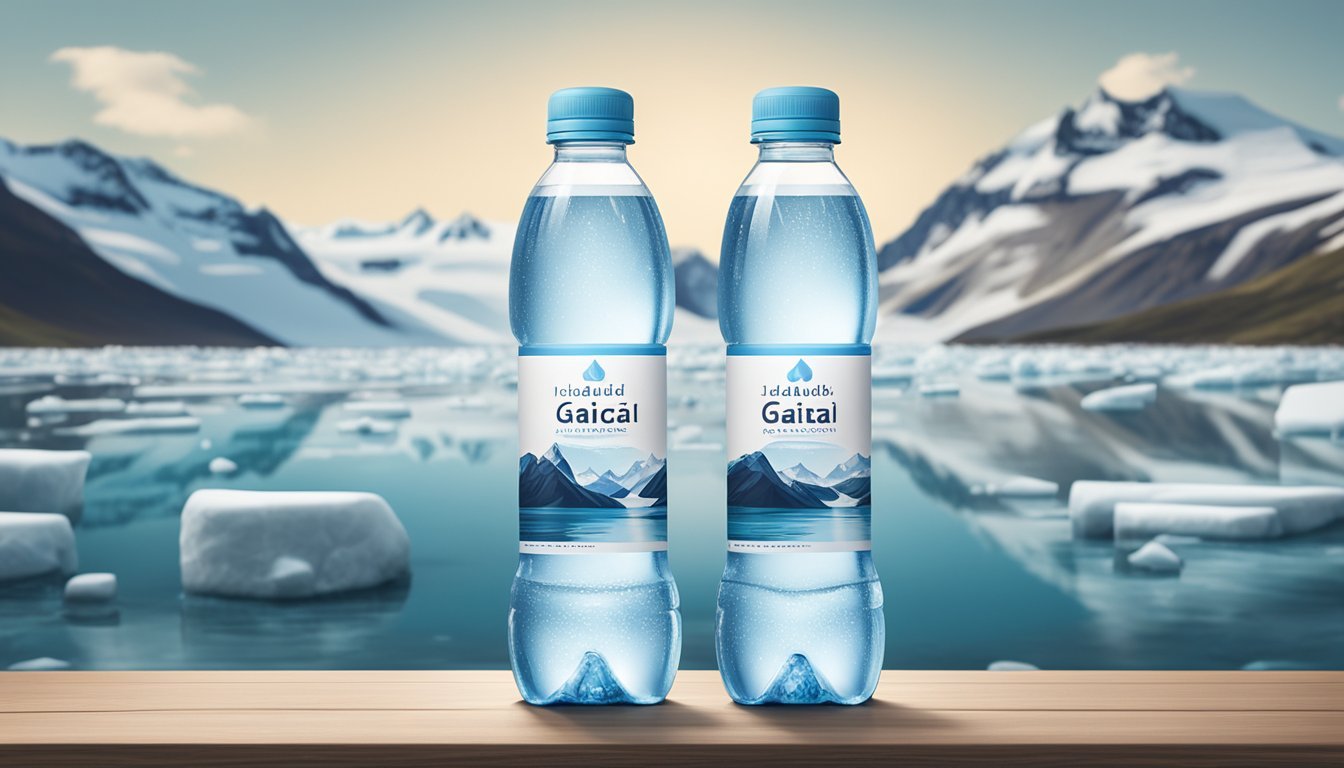Icelandic Glacial vs. Just Water
Comprehensive Comparison of Bottled Water Brands
Choosing the right bottled water can be a nuanced decision for many consumers who prioritize both quality and environmental impact. Icelandic Glacial and Just Water are two brands that have gained attention in the bottled water market. Icelandic Glacial boasts its origins from the naturally alkaline springs of Iceland, touting itself as providing some of the cleanest water available. The brand emphasizes its commitment to sustainability, with operations powered by renewable energy. On the other hand, Just Water pitches its product with an emphasis on ethical sourcing and eco-friendly packaging, claiming to provide water with low mineral content and a high pH level.
The question of which bottled water is better, Icelandic Glacial or Just Water, is a topic of interest for those who are not only concerned with the taste and quality of their water but also the environmental ethos of the companies they support. As consumers become more conscious of their choices, the origin, processing, and packaging of bottled water play pivotal roles in their purchasing decisions. Both Icelandic Glacial and Just Water have unique selling points that cater to a growing market of environmentally aware and health-conscious buyers. The comparison of these two brands involves examining their respective sourcing methods, quality of water, and the overall impact on the environment.
Overview of Bottled Water Industry
The bottled water industry encapsulates the production and sale of water in containers. Such water typically varies from tap water, which is commonly delivered through a public infrastructure. Consumers gravitate toward bottled water for reasons ranging from taste preferences to perceptions of purity and safety.
Types of Bottled Water:
Spring Water: Sourced from natural springs.
Mineral Water: Contains naturally occurring minerals.
Purified Water: Treated to remove chemicals and pathogens.
Water brands market their products by emphasizing qualities such as source purity, mineral content, and environmental impact. Brands like Icelandic Glacial and Just Water have positioned themselves as premium products within the market. Icelandic Glacial, hailing from Iceland's Ölfus Spring, prides itself on being a carbon-neutral product. Meanwhile, Just Water emphasizes its sustainability through eco-friendly packaging and a balanced pH.
The industry heeds consumer demand for both convenience and sustainability. As such, bottled water is a staple in retail outlets, varying from small stores to large supermarkets. However, sustainability concerns challenge the industry, pushing brands to seek environmentally friendly approaches, such as increased use of recycled materials and reduction of the carbon footprint associated with production and distribution.
Market Characteristics Description Consumer Demand Convenience, taste, purity Environmental Impact Sustainability initiatives, carbon footprint Source Springs, aquifers Packaging Plastic, glass, eco-friendly materials
Drinking water quality and availability continue to be key drivers in the industry's development and consumers' brand preference. As a result, both bottled water and tap water industries strive to assure consumers of their products' safety and quality.
Understanding Water Quality and Sources
When evaluating bottled water, it is essential to consider the pH levels, total dissolved solids (TDS), mineral content, and the source of the water, as these factors directly influence the water's quality and potential health benefits.
Significance of pH Levels in Bottled Water
The pH level of water indicates its acidity or alkalinity on a scale of 0 to 14, with 7 being neutral. Alkaline water typically has a pH above 7, and some individuals believe that water with higher pH levels can offer health benefits, such as neutralizing acidity in the body.
Total Dissolved Solids and Mineral Content
Total Dissolved Solids (TDS) measure the combined content of all inorganic and organic substances in the water. A higher TDS can result from a variety of minerals such as calcium, magnesium, and potassium, which are essential for health. Bottled waters with higher mineral content are often considered of superior taste and quality.
Impact of Water Source on Quality
The source of water significantly influences its purity and mineral composition. For instance, Icelandic Glacial water is sourced from the Ölfus Spring, which is naturally filtered through volcanic rock, imparting it with minerals and resulting in a naturally alkaline pH. Spring waters typically have a unique mineral profile that can not only affect taste but also offer different health benefits.
Comparative Analysis of Icelandic Glacial and Just Water
When selecting bottled water, consumers often consider the source and filtration process, mineral content and health benefits, taste, environmental impact, and packaging materials. This comparative analysis examines these aspects for Icelandic Glacial and Just Water.
Source and Natural Filtration Process
Icelandic Glacial water is sourced from the Olfus Spring in Iceland, which possesses natural underground spring water filtered through volcanic rock. Just Water, on the other hand, is sourced from a natural spring in the Adirondack Mountains and utilizes a similar natural filtration method. Both brands emphasize the purity of their water due to these natural filters.
Mineral Content and Health Benefits
The mineral content in Icelandic Glacial water includes calcium, magnesium, and a balanced pH, which contribute to the body's electrolyte balance. Just Water also boasts minerals and a high pH level that claim to offer health benefits, including hydration and overall wellness.
Taste Profile and Mouthfeel
Customers of Icelandic Glacial frequently mention its crisp, clean taste and balanced mouthfeel. Just Water often receives praise for its smooth taste. Both brands aim to provide a refreshing experience, although personal preferences may vary.
Environmental Impact and Sustainability
Icelandic Glacial touts itself as the world's first carbon-neutral beverage and emphasizes environmentally sound practices. Just Water also prioritizes sustainability, using 82% renewable packaging including paper and plant-based plastic. Both are invested in reducing environmental impact, albeit through different methods.
Pricing and Accessibility
Regarding expense, Icelandic Glacial tends to be positioned as a premium product, while Just Water is marketed for affordability and convenience. Consumers can find both brands in various stores, with Just Water offering a store locator on its website for consumer convenience.
Packaging and Materials Used
Icelandic Glacial uses BPA-free bottles with an emphasis on recyclability. Just Water also provides BPA-free packaging but goes further using a paper-based bottle with a cap made from sugarcane. They both use materials aiming to reduce environmental harm, with Just Water's rPET and aluminum reflecting an additional focus on renewable resources.
Health Implications of Bottled Water
When considering bottled water brands such as Icelandic Glacial and Just Water, health implications are a crucial aspect. Both brands boast pure and natural sources; Icelandic Glacial from springs in Iceland and Just Water from springs in the Adirondack Mountains.
Icelandic Glacial is known for its high pH level, tending towards alkalinity. An alkaline pH level can contribute to neutralizing acid in the bloodstream, which, proponents suggest, may lead to better hydration and health benefits.
Just Water claims a high electrolyte content without additional processing. Electrolytes are significant for maintaining hydration, as they help to balance fluid levels in the body. Adequate hydration is paramount for all bodily functions and can affect overall health.
Both brands consider the presence of electrolytes beneficial for the following reasons:
Calcium and magnesium: Contribute to strong bones and muscular function.
Sodium and potassium: Key in maintaining cellular function and heart health.
Bicarbonates: Can help maintain pH balance in the stomach.
It's worth mentioning that Icelandic Glacial has a high silica content. Silica is associated with supporting skin, hair, and nail health. Consumers also pay attention to the absence of contaminants like PFAS chemicals, with Icelandic Glacial emphasizing a 100% natural filtration.
When choosing between Icelandic Glacial and Just Water, the natural health benefits of electrolytes, pH balance, and the absence of harmful substances are significant factors to be considered.
Regulatory Standards and Quality Control
In assessing Icelandic Glacial and Just Water in terms of regulatory standards and quality control, it is important to understand the compliance landscape with FDA and EPA regulations and the rigor of testing implemented to ensure safety from contaminants and additives.
FDA and EPA Regulations on Bottled Water
Icelandic Glacial and Just Water both adhere to the FDA's regulatory framework, which is as stringent as the EPA's standards for tap water. The FDA categorizes bottled water under "food," and as such, it must comply with the Federal Food, Drug, and Cosmetic Act (FFDCA). This compliance includes routine testing for environmental contaminants. The entities report their testing results and processes in a water quality report accessible to consumers, reflecting their commitment to transparency and quality control.
Water Quality Report: Clearly documented and made available to consumers, detailing levels of any detected contaminants.
FDA Compliance: Bottled waters are subject to the FDA's regulations, ensuring the water meets designated safety and quality benchmarks.
Testing for Contaminants and Additives
Icelandic Glacial boasts a water source from the Ölfus Spring in Iceland, with natural filtration through lava rock significantly reducing the presence of contaminants. Just Water sources its spring water in the United States and also invests in infrastructure to maintain the quality of its product. Both companies regularly test their water for a suite of potential contaminants, including but not limited to PFAS chemicals, fluoride, chlorine, and other additives that may affect human health.
PFAS Chemicals and Fluoride: These potential contaminants are rigorously tested for, with results reported within water quality reports.
Chlorine and Additives: Neither brand uses chlorine or unnecessary additives, maintaining the water's purity and natural composition.
Quality Control Processes:
Regular testing at source and during bottling stages.
Strict adherence to acceptable limits for detected contaminants.
Use of high-grade materials and processes to prevent contamination.
Both brands prioritize not just compliance, but also the delivery of a product that exceeds minimum regulatory requirements for the safety and satisfaction of their customers.
Consumer Considerations When Choosing Bottled Water
When selecting bottled water, consumers often weigh the cost against the perceived value and consider personal taste preferences.
Price Comparison and Value for Money
Icelandic Glacial and Just Water present two different price points in the bottled water market. Icelandic Glacial, sourced from Iceland, typically commands a premium due to its origin and marketing as a natural and pure water source. In contrast, Just Water touts its eco-friendly packaging and ethical sourcing, which may be reflected in its price and appeal to environmentally conscious consumers.
Price Range (Approximate):
Icelandic Glacial: Higher price bracket
Just Water: Mid-range price bracket
Value is determined not only by price but also by what the consumer is looking for – be it the sophistication of a foreign water source or sustainability efforts.
Importance of Taste and Personal Preferences
The taste profile of bottled water can vary remarkably. Some individuals prefer the mineral-rich flavor that Icelandic Glacial offers, often described as crisp and refreshing. Others may favor Just Water, which is reported to have a neutral taste profile that appeals to those looking for a taste close to pure water.
In summary:
Icelandic Glacial: Rich, refreshing mineral taste.
Just Water: Neutral, clean taste.
In addition to taste, personal preference may guide a consumer's decision based on ethical considerations, the environmental impact, or health beliefs. Some may opt for a reusable water bottle and a water filter to reduce plastic waste and long-term costs. Others might lean towards the convenience and perceived purity of bottled water despite a higher price tag.
Environmental and Social Responsibility
When assessing the environmental and social responsibility of bottled water brands, Icelandic Glacial and Just Water stand out for their sustainable approaches. Icelandic Glacial markets itself as the world's first carbon-neutral bottled water. This claim is grounded in the brand’s use of a bottling facility powered entirely by geothermal and hydroelectric energy, reflecting its commitment to environmentally sound practices.
Icelandic Glacial:
Operations: Utilizes 100% natural green energy for production.
Certifications: CarbonNeutral® certified for product and operations.
Packaging: Focus on sustainable practices, though specific recyclability details are not outlined in the provided snippets.
Just Water also prioritizes environmental stewardship by offering a bottle that is primarily made from paper, a renewable resource, and is 100% recyclable. The company's approach aims to reduce carbon footprint and emphasizes sustainability.
Just Water:
Material: Bottle made from 82% renewable resources.
Recyclability: 100% recyclable carton.
Carbon Footprint: Efforts are made to reduce emissions through responsible sourcing and production.
Both companies exhibit a strong sense of environmental and social responsibility, albeit through differing methodologies. Icelandic Glacial relies on clean energy and carbon neutrality for their environmental claims, while Just Water focuses on sustainable packaging and recyclability. Each brand's approach reflects a proactive stance on sustainability and responsibility within the bottled water industry.
Conclusion
When considering Icelandic Glacial Water and Just Water, consumers are faced with two commendable options within the bottled water market. Icelandic Glacial Water, boasting a low total dissolved solids (TDS) content and a slightly alkaline pH level, prides itself on a clean taste and an environmentally friendly ethos. In contrast, Just Water emphasizes its commitment to sustainability with its plant-based carton design, appealing to eco-conscious buyers.
Environmental Impact: Icelandic Glacial Water's facility runs on geothermal and hydroelectric power, signifying a reduced carbon footprint. Just Water similarly highlights eco-friendliness, touting a renewable packaging of 82% from sustainably managed forests.
Taste and Purity: The neutral taste of Icelandic Glacial Water appeals to those who prefer water without additional flavoring. It does not suffer from plastic or metallic aftertastes, as found in some bottled water. Meanwhile, Just Water's flavor profile is influenced by its natural source and the materials used in its packaging.
Health Considerations: Consumers often consider pH levels and mineral content in their water choice for potential health benefits. Icelandic Glacial has a slightly alkaline pH, a characteristic some users prefer, while Just Water offers natural spring water without significant alterations.
In summary, preferences for bottled water often depend on factors such as taste, commitment to the environment, and perceived health benefits. Both Icelandic Glacial and Just Water present favorable aspects, but it ultimately depends on individual priorities—whether one's focus is on eco-friendliness, the water’s natural properties, or the taste and purity of the product.








